My personal camera
Before I begin this review of the Fujifilm GFX50R, I should include a disclaimer. This review is based on my personal camera and lenses which I purchased at full retail price at an authorized Fujifilm retailer in Hong Kong.
These are not loaned to me, nor are they purchases that I intend to return. I hope this will provide background for a candid review from someone that has put his own money on the table, respondent with the expectations that come with that.
All images in this post were taken either with the Fujifilm GFX 50R, or in the case of the images of the 50R itself, with the Fujifilm X-Pro2.
All about trade-offs
I should start this first impressions review by talking about trade-offs. We all have to make them in life, all day, every day. Do we eat that delicious bagel and then try to sweat it out in the gym, or do we skip the breakfast and stick with an Americano? Do we buy that new medium format camera, or do we put food on the table?
Often, we don’t have to make such binary decisions as these examples; we can compromise and find some middle ground that gets us most of the way there on both sides of the decision. We can have half a bagel and do a shorter run in the gym, or get the Fujifilm X-T3 and eat instead of getting the 50R, since 50MP isn’t really needed for Instagram anyhow!

The big moment
Upon opening the pristine white Fujifilm box, which contrasts dramatically from the black boxes used in the X series, it becomes readily apparent that Fujifilm engineers had to overcome a number of challenges through pragmatic trade-offs.
Weight
The very first thing that a new owner will experience is the weight of the camera, or the lack thereof. This incredible 50MP medium format camera that clobbers other cameras with its image quality, feels barely heavier than what you’d expect a toy camera to weigh. I had to turn it on to make sure I hadn’t been given a prototype plastic shell. The official weight is 775g, which is a bit heavier than the Leica M10, but the 50R feels noticeably lighter and almost hollow compared to the M10.
Build quality
This leads to our first trade-off, that incredible light weight means that the camera doesn’t feel as high quality as perhaps expected of a USD4500 camera. The buttons, control dials, and finish lag behind the Fujifilm X-Pro2, let alone something like the Leica M10, which is orders of magnitude higher quality. The lack of a proper front control dial is annoying, but not a big deal, however the lack of a proper ISO dial is very annoying indeed. One can only assume that price played a role in leaving out the super complex and super cool combined ISO/Shutter dial from the X-Pro2.

Size
The second thing a new owner will experience is the size. I had watched every Youtube video on the 50R, indulged almost every day in Jonas Rask’s incredible images on his website, and read every article I could find that showed pictures of the 50R prototypes. I can say, unequivocally, that a new owner is going to be surprised at how big the 50R really is in real life. Fujifilm clearly scored a home run when it comes to proportions, because the camera looks like an XL X-E3 in the pictures and videos, but in reality, it’s more like an XXL X-E3. When you add in the usual 45MM and 63MM lenses, it becomes quite a bulky package.
The trade-off that I think the Fujifilm engineers faced was fitting the huge sensor, keeping good battery life, and providing some way to balance the necessarily large (and sometimes quite heavy) medium format lenses. I think the battery largely dictates the depth of the camera, and the Fujifilm engineers likely accepted a fatter camera for the convenience of having the same battery in the 50R and the 50S. I personally would have preferred a slightly smaller battery and a thinner camera, since this T125 battery seems to last longer than needed. Having said that, I’ve read a few people already commenting on how they’re struggling to hand hold the heavier lenses on the 50R due to the shallow grip and wished the camera was larger still.

Controls
If you’re a long-time Fujifilm X fan, then you may be somewhat taken aback by the lack of a D-pad. Even the latest X-T3 has one, but the X-E3 and 50R don’t. I thought it would be irritating to use the 50R without a D-pad, but it actually became second nature pretty quickly. I do find I use the joystick the most, or control lever as some camera companies call it. I’m trying to train my muscle memory to use the touch-screen more since the control lever doesn’t feel great to use when going through tedious menu settings.
Speaking of the touch screen, it works well enough, but I’m not a big fan of tilting screens, and the 50R doesn’t change that view. In fact, I’d say this is one of the more chunky implementations of a tilting screen; it feels very sturdy, but also thicker than it needs to be. The wide bezel around the screen certainly doesn’t help with the aesthetics.
Going back to our theme of trade-offs, it appears that some corners were cut and money saved on the buttons hardware, with every button on the 50R having a different feel. In comparison, the X-Pro2 has a very distinct click to all the buttons, with a consistency that screams quality.
The 50R has several mushy buttons that would make Sony A7 owners feel right at home; the worst offenders are the AF mode and Q menu button on the rear palm grip area, right next to where you rest your thumb. If there ever were any buttons that needed a nice click, it would surely be these two. This lack of quality in the controls is a big disappointment because Fujifilm knows how to do this right; having owned the X-Pro1, X-T20, X-Pro2, and X-T2, I’ve experienced the progression to great tactile button and control lever feedback as each model evolved.

In order to find a practical solution to losing the traditional in-laid front control dial, the Fujifilm engineers came up with the trade-off of moving it to a little dial ring under the shutter button; this then forces the relocation of the power switch to a toggle to the right of the shutter button. I initially thought this would be a challenge to get used to, but it becomes second nature very quickly.
However, I still don’t like this trade-off and wish they had stuck with a regular shutter button with a traditional power switch. I’ve already disabled the front control dial because I found myself mysteriously shooting at ISO12,800 in broad daylight, not realizing I had inadvertently turned the dial. After this occurred several times, I disabled it, and use the ISO button to the left of the exposure compensation instead.
Dear Fujifilm, if you’re reading this blog, please use the X-Pro2’s ISO/Shutter dial in the GFX50R v2, and bring back the regular shutter button and power switch combination. Why change something that wasn’t broken?
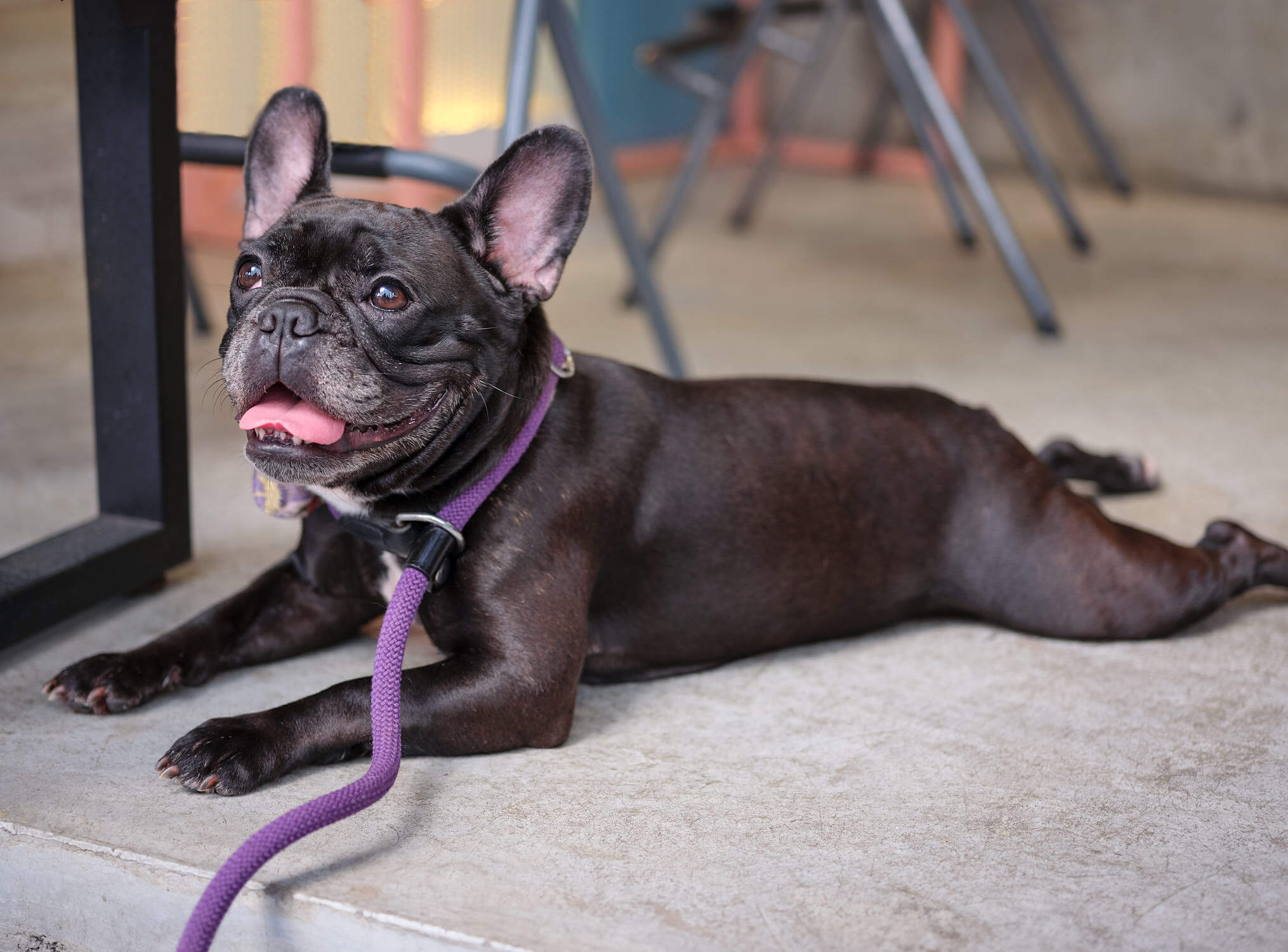
Autofocus
Based off the early reviews I had read, I wasn’t expecting much from the autofocus system. I was expecting it to be slow and uncertain, with lots of nausea inducing pulsing or hunting. I was also expecting it to be very accurate once it locked on due to it being a contrast detection system. Having owned the Leica Q before which also uses a contrast detection system, I’m familiar with this type of system, and as with the Q, the 50R does not disappoint. I would go so far as to say that I’m rather impressed with it’s autofocus performance with the types of scenes that one would normally use a medium format camera for.
If you’re trying to shoot sports or pets or animals running around, it’s certainly possible to use the 50R, but you’ll have to call upon your manual focus tricks like focus trapping, zone focusing, or taking 1,000 pictures and hoping one comes out tack sharp.
On the flip side, manual focusing the 50R is a dream. Using M lenses with an adapter has turned out to be one of the most fun photography experiences in some time. I can get absolutely tack sharp images at F1.2 on the Voigtlander 50MM using the excellent focus check function of the 50R. I can’t get close to that level of consistency with the excellent rangefinder patch on the M10.

Performance
When you first handle the 50R, it feels like a brute. People like to compare cameras to cars, so the first thing that came to mind was Corvette ZR1. I wish it were a Porsche GT3, but it’s just got so much brute force, without a lot of finesse, that it has to be a Corvette ZR1. I think Fujifilm did this intentionally to play on their history with the Texas Leica, a brute in its own day.
With the brute looks and feel comes very good performance. I’m surprised at how quick the camera turns on, quick enough that it’s ready to go when you’ve raised it to eye level to take a picture. I’m surprised at how quickly you can zoom into a recorded image and smoothly pan around to check focus. The menus and overall camera operation feel like any modern Fujifilm X camera. It’s not up to the super fast X-T3 speeds, but it’s certainly on par with the much smaller and lower resolution X-Pro2.
Another area that seems to have grown up through the X series is the shutter sound and feel. The 50R has a multitude of options for how you want the shutter to operate including Electronic Front Curtain, Mechanical Shutter, and Electronic Shutter. I use the setting that lets the camera decide, and when it chooses to use the EFC, the sound is just divine; it’s a beautifully dampened and serene sound. Even the new Leica M10P doesn’t hold a handle to this beautiful sounding shutter.
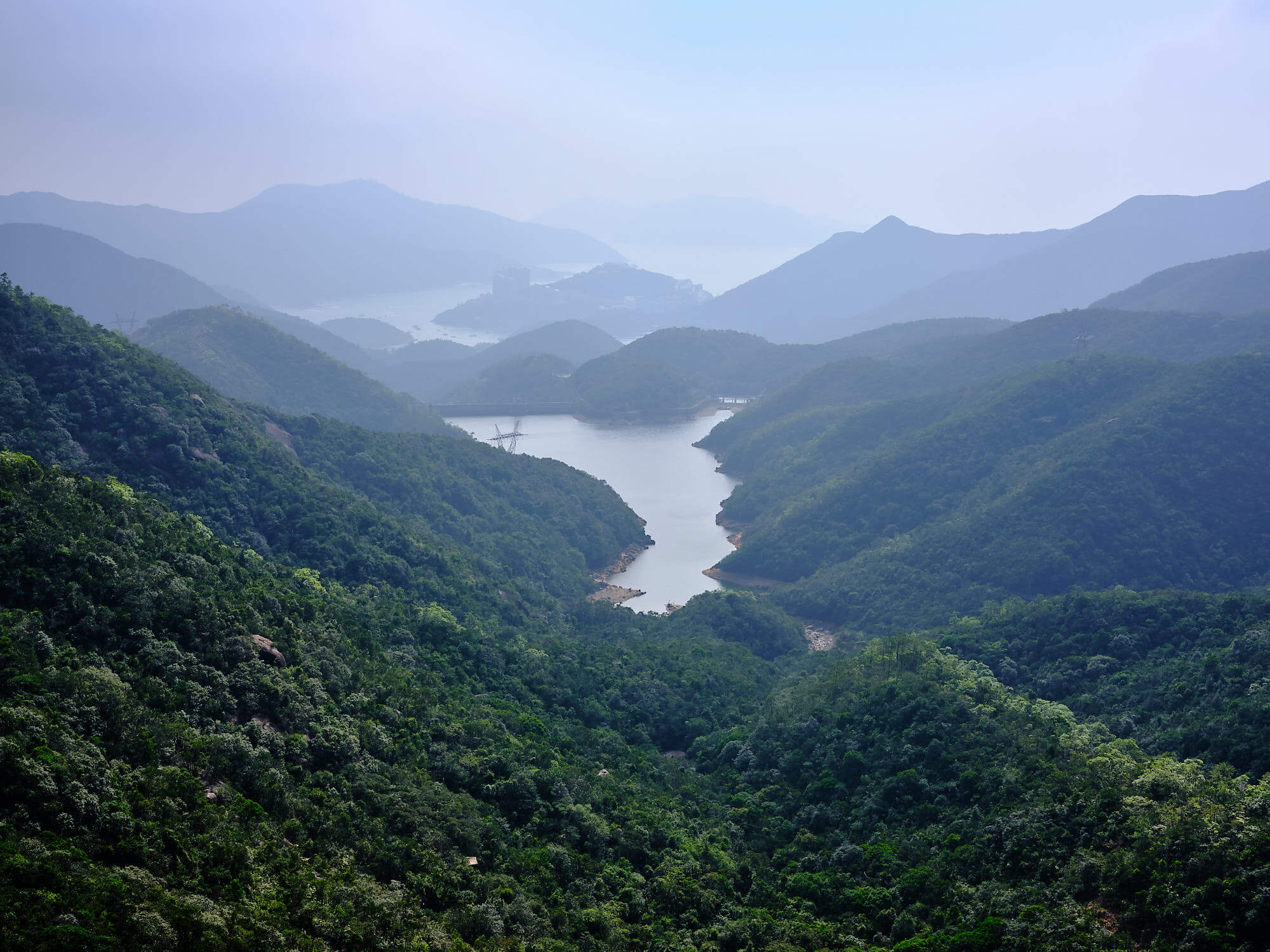
Portability
The camera is big and a bit unwieldy, but I was surprised to find that I can fit the 50R, with 63MM attached, and the 45MM on the side in a Peak Design 5L sling. It’s a bit tight depth wise, but has enough space remaining to also fit in a small wallet and iPhone X.
I recently took the 50R for a short hike in a backpack with the 63MM, 45MM and 110MM, and a Sirui carbon fibre tripod and didn’t feel that it was too bad. This system, with the exception of the 110MM is actually not that heavy; it’s just the size is a challenge to fit at times.
Video
It takes videos, I think. If you have your 50R and an iPhone and you absolutely must take a video, save yourself the hassle and use the iPhone.

Image quality
Remember all that talk about trade-offs above? Well, it becomes readily apparent that this is one area that Fujifilm was not willing to make any trade-offs, whatsoever. If they went cheap on a button here and there, it was so that they would not have to compromise on the image quality.
I have some pretty good cameras at my disposal, either as my personal cameras (Leica M10, Fujifilm X-Pro2 and the now sold Leica Q) or in my household (Sony A7R3 and Fujifilm X-T2), and nothing prepared me for the first time looking at familiar scenes outputted from this beast on a 5k iMac screen. If you haven’t already downloaded some of the full-size JPEGS linked throughout this article, I highly recommend you try it out and view them on a high resolution screen. I treated this camera just like the X-Pro2 when taking those images. It’s rather mind-boggling to see this kind of resolution from a camera that you can carry around with you.
The A7R3 comes very close, but that system is somewhat let down by the small pixel size (there seems to always be noise in the sky, even at low ISO), and the lenses that seem to have edge sharpness issues, even the G-Master lenses that we have (and love).

Conclusion
Given the price point that Fujifilm was trying to achieve (half the price of Hasselblad at launch, and a few thousand lower than their own 50S at launch), I think they made the right trade-offs for the most part. I think we’re going to see Fujifilm have a home run with the 50R, bringing a lot more people into the medium format world.
In many ways, I see the 50R as the modern X-Pro1. It’s a bit clumsy and some odd choices have been made with the control dials, but Fujifilm knows how to make improvements, and I can only imagine what the GFX 50R2 will be like. In fact, rather than imagine, let’s make a wish-list for the 50R2:
- Proper front control dial or no front control dial at all
- Shutter button and power switch brought back together from their divorce
- ISO and shutter speed dial combined like the X-Pro2, but evolved so that you can lift the dial up and it stays lifted to adjust ISO; when set, you can press the dial back down
- Thinner battery so that we can have a slightly thinner body, given that battery tech should have advanced by then
- Much better button feel and consistency; if it doesn’t click, give the engineer some stick!
- Even though the 50R is a semi-pro camera, it would be nice to have the same auto-ISO functionality as the X series cameras; there is currently no auto minimum shutter speed based upon focal length
In conclusion, the 50R is 90% of what I hoped it would be (size, controls, quality) and 110% in the areas I needed it to be (image quality, weight, familiarity). I’m very happy to have joined the medium format world, and am looking forward to seeing how Fujifilm evolves the GFX series over the coming years!
Thank you for taking the time to read this first impressions review. Please leave any questions or comments in the section below and I’ll be happy to respond.

Discover more from fcracer - Travel & Photography
Subscribe to get the latest posts sent to your email.

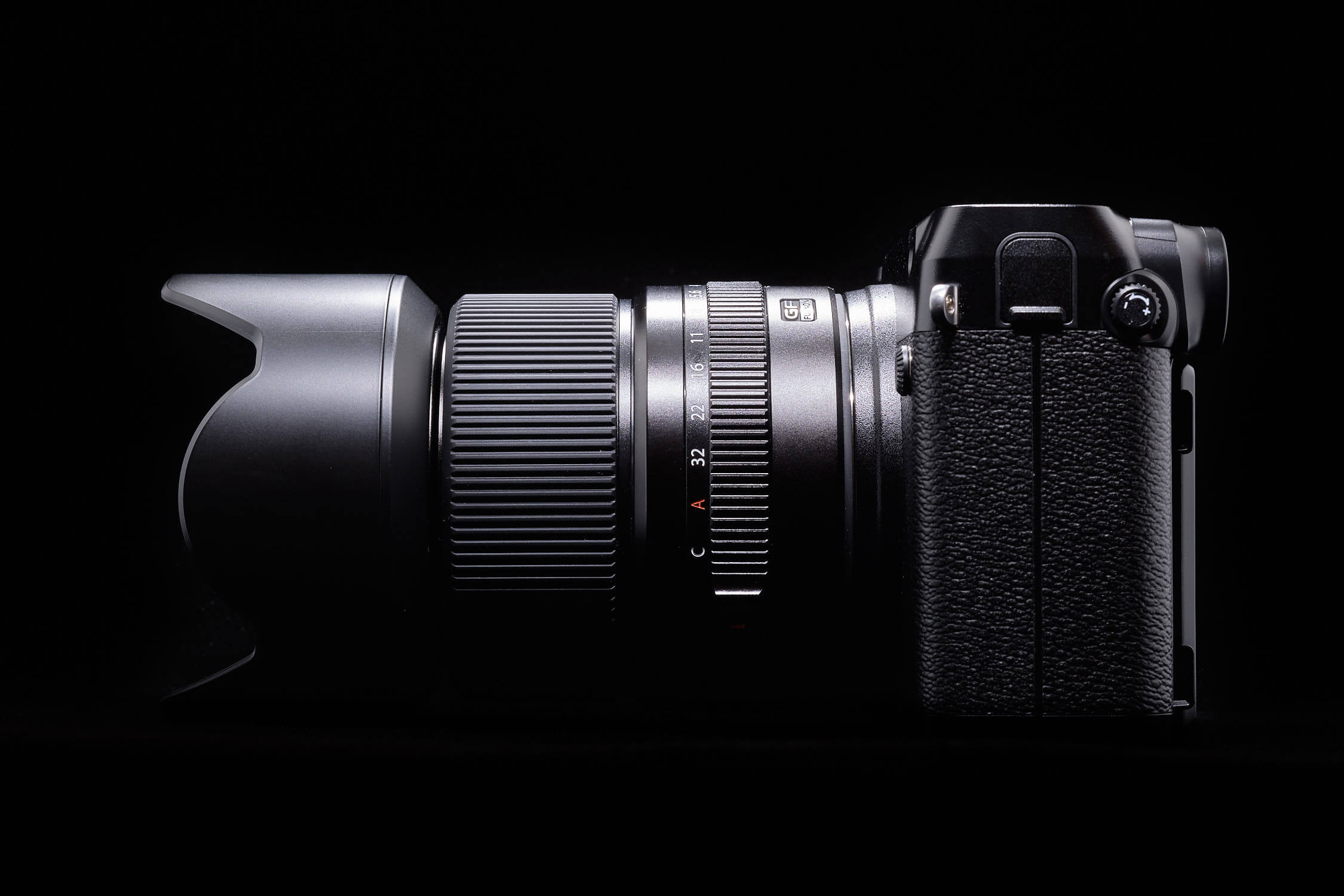
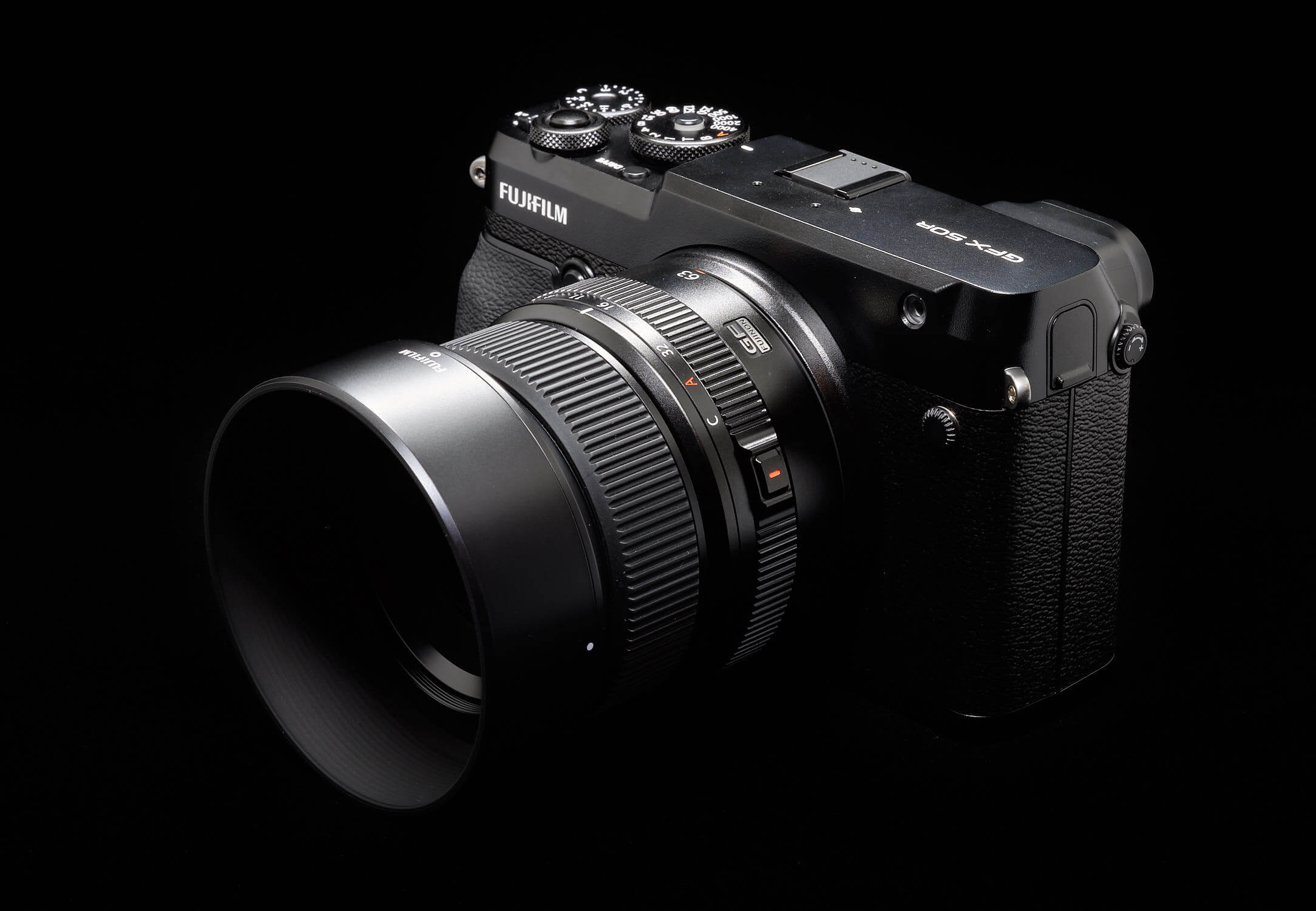
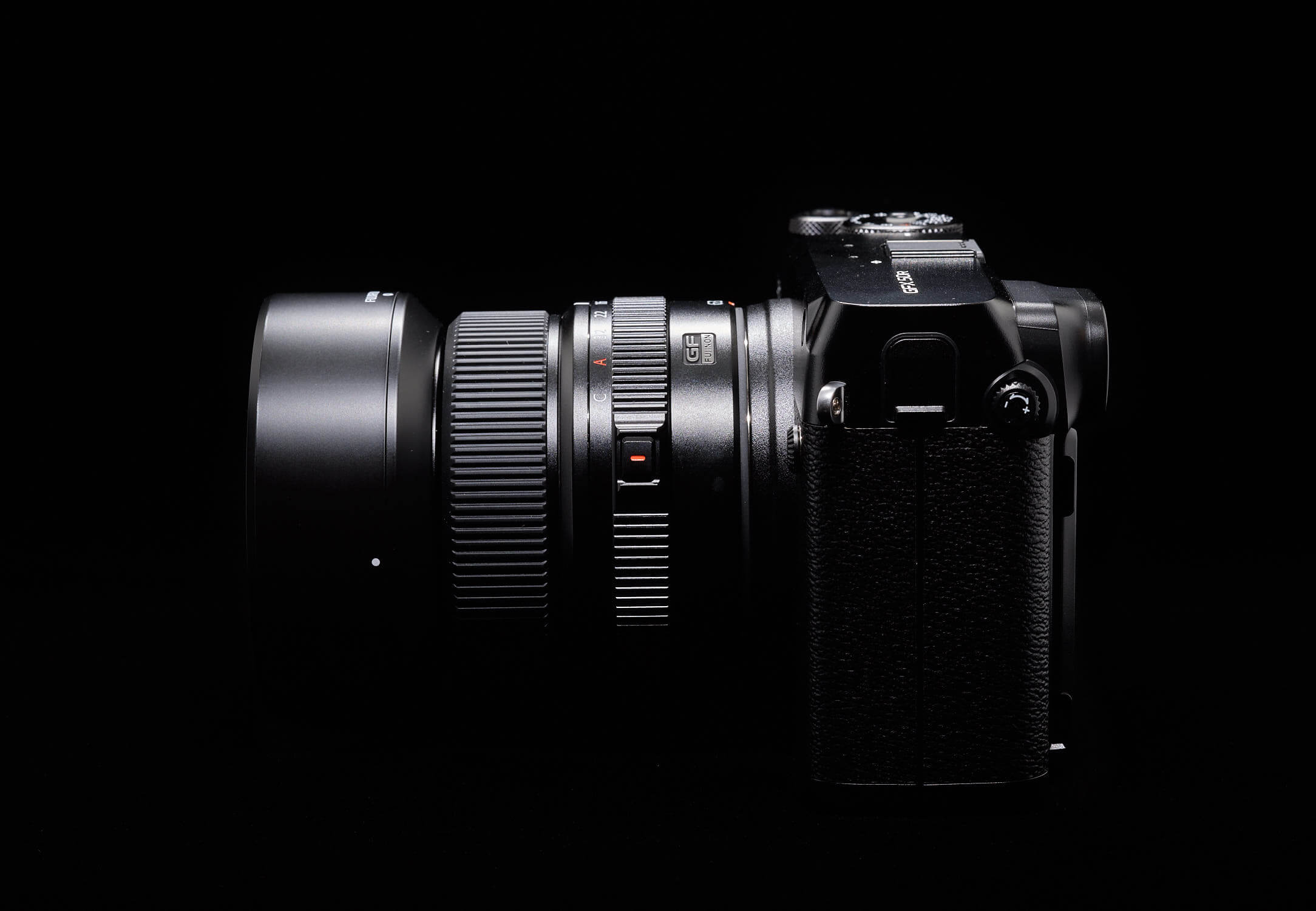
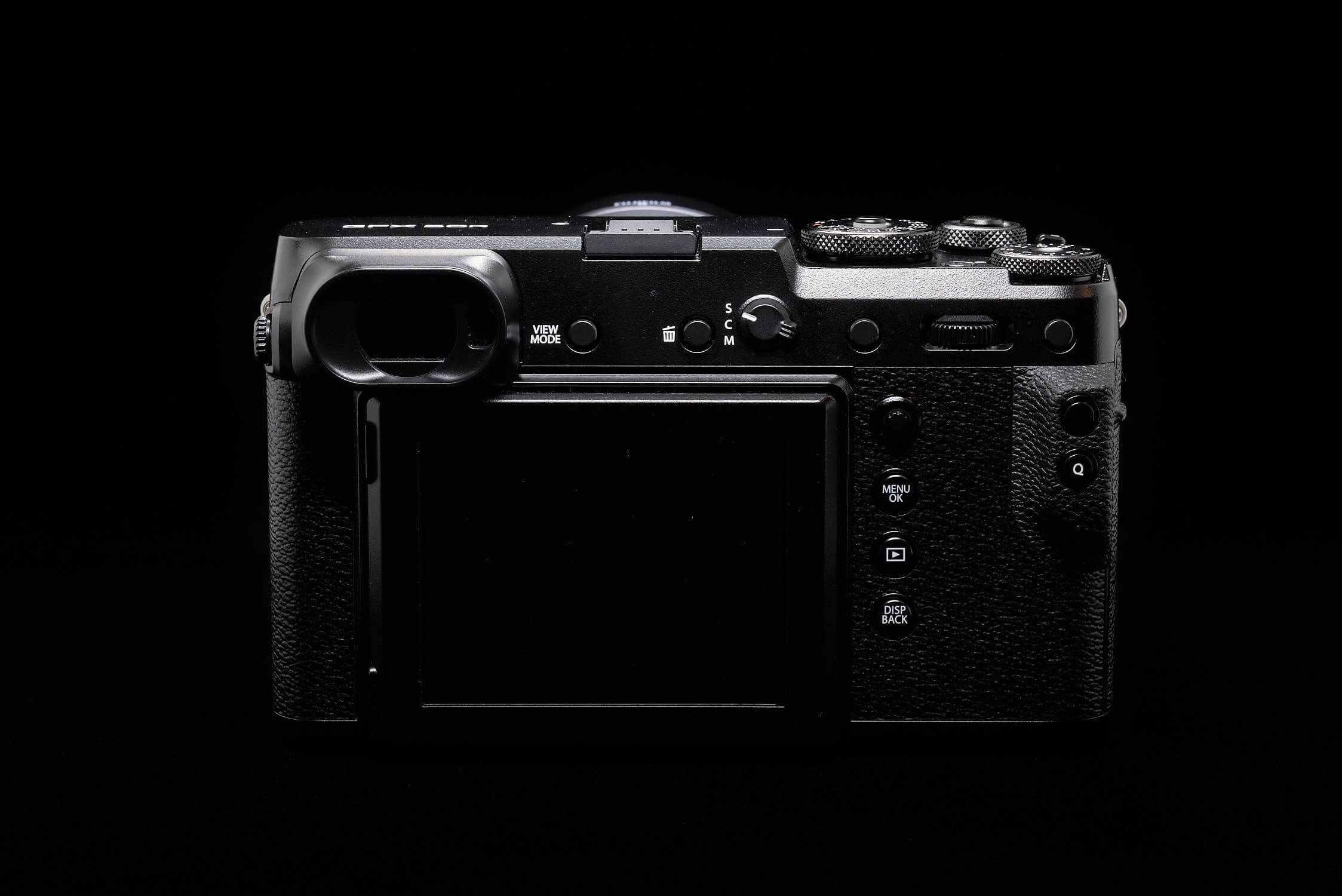
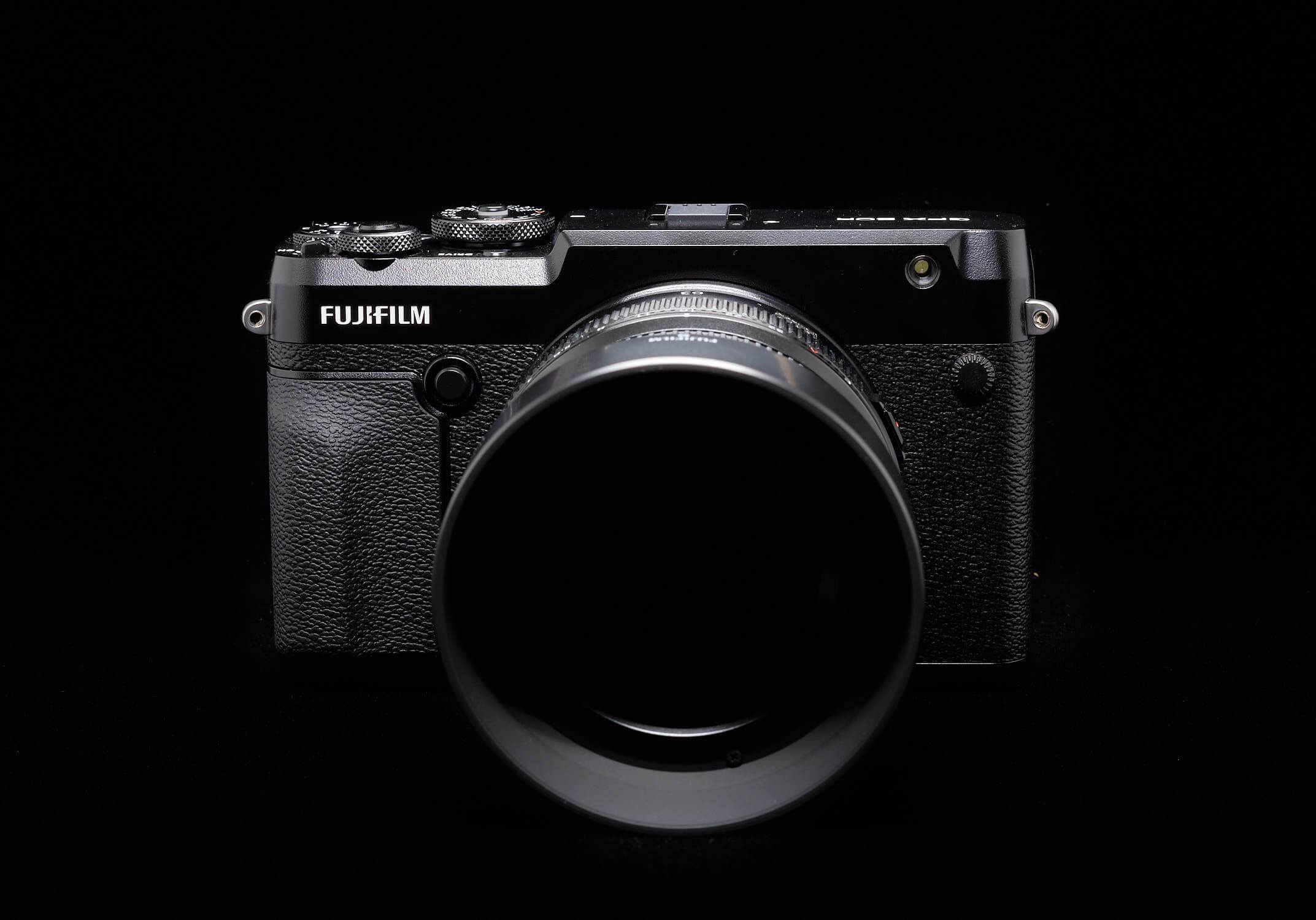
What lens on the xpro2 did you take the product shots of the 50r shots with? they look really sharp! or are you sharpening in post a lot?
Hi Charles, I was most likely using the XF56 f/1.2 lens. I use focus stacking in Affinity Photo to make the image sharp from front to back. Fujifilm cameras have a great function to complete the focus bracketing for you. Then it’s just a matter of importing them into Affinity Photo to stack them and mask out the background. It’s a pretty quick workflow and the results look more professional than I deserve!
Much appreciate your reply, thank you.
Like you, I don’t see either the M10 or 50r replacing the Sony, they are more, as you put it, ‘complimentary’. I’d want to keep a Sony for long lens sports / action type shooting. However, I think if I got a 50r, then I’d probably want to change my A7R3 to an A9 or A6400, the A7R3 lacks the new tracking of these models, which would be even better for the intended use I’d be keeping a Sony for…..& a 50r would cover the hi res/ landscape type usage, so there would be less need for a hi res Sony.
Your “once you try a 50r it is hard going back to anything else” is an interesting statement to me……but then so to is “M10 however is definitely more fun & satisfying to shoot”.
Do you find shooting with the 50r, say on the street, that it does generate too much attention, vs say the M10?….if I end up with a 50r, I’d probably be using adapted manual focus lenses on it mainly I think, which maybe less bulky that the Fuji options.
It’s a tricky choice for sure!
Hi Lawrence, I would say that the M10 is very discrete, with the 50R using an adapted lens just a bit more indiscrete. The reality is that any camera that is raised to the eye level will not be discrete. If you take an image using the screen and hold the camera at waist level, I think you’ll find people won’t notice it as much. In that case, the 50R is better because it has a tilt screen. However, if you use zone focusing and F11/F16 on the Leica, you can take some very discrete images without anyone noticing. Sorry I cannot give a concrete answer because both cameras are so good that it’s hard to choose one over the other.
Hi Lawrence, did you see the announcement from Sony? The A7R4 looks like an amazing camera. Before making your purchase, you should give it a good look: https://www.dpreview.com/forums/thread/4410201
Hi, can I start by just saying ‘thank you’ for taking the time and trouble to share your images & thoughts on the equipment you are using, with everyone on the net. Your contribution is appreciated!
I stumbled upon your website (now bookmarked) from an old thread on DPReview, where you linked to this review as an M10 owners view of the GFX 50r.
I’ve been a long time Canon Eos shooter (~30 years since the Eos 620 launch) but gave up waiting for Canon to introduce something I wanted much more than my old 5D2’s. Sony offered something that was not only a compelling enough reason for me to upgrade from my 5D2’s, but also to switch brands, softened somewhat by the ability to adapt my existing canon glass. I got an A7R3 at launch in Nov 2017. It remains a fantastic camera. I note that I read somewhere that you have one in your household too.
However, ironically, since owning a digital system camera with close to state of the art AF system for the first time, I’ve gone down a photographic path that sees me shooting more often than not with manual focus lenses & in manual exposure mode.
That, combined with a growing interest in Leica in general, has resulted in me watching and reading a lot about shooting with Leica M10/240/M9’s….& the general feeling that comes through from everything I’ve watched/read is the fun/satisfaction one gets shooting with this more basic offering…..which intrigued me, I shoot for ‘fun’, but as impressive as the tech is in the A7R3, I’m not sure I describe the experience of shooting with it as ‘fun’. So, I have a growing, illogical, interest in M10’s currently.
Secondly, I also have an interest in xpan panorama shooting, but I can’t bring myself to going back to shooting film (* although I am currently putting a roll of FP4 through an old rangefinder Canon 7 to see how I feel about shooting with a rangefinder – to support or reduce the case for getting an M10!), and the xpans are starting to age & have electronic drives which can & do fail and spare parts are starting to become scarce, so I’m reluctant to fund an expensive xpan). What I’d be interested in is a digital version of the xpan……which is where my interest in the gfx 50r (& Hasselblad XD1) comes in.
……& that is how I found your site….M10 & GFX 50r Googling.
As an A7R3 user (who’s pretty content with the camera), the thought of going M10 and losing the EVF & it’s ‘live’ preview of exposure and image over lay info (which I now much prefer to optical SLR), & someone that has next to no Rangefinder experience, it’s kind of daunting to consider getting an M10, it could be an expensive mistake. But I like the direct control dials / minimal controls ethos of the M10.
The M10 won’t scratch than xpan itch though, where as the 50r does, and it’s got me thinking that maybe the 50r would potentially offer me some of what the M10 offers, slightly more simplistic direct access controls (vs A7R3) without the unknown factor of losing the EVF, but still retaining a rangefinder style of shooting, while also Ticking the digital xpan desire….yes, I know you can always crop to 65:24 ratio, but it’s not the same as shooting & composing in it.
Your article here is great for the 50r, as is your one on the 50r as a travel camera, but what I’d like to read more of is, as an owner/user of both M10 & 50r, what are your direct thoughts comparing the two in real world use. Which do you grab as you leave the house for a photo Shoot? Which would you save first from the waves on a desert island? Is the M10 still more ‘fun’ & satisfying to shoot with than the 50r, or are they actually very close (& streets ahead of the Sony for enjoyment / pleasure of just shooting & capturing the moment?)
Would really be interested in hearing how you ‘feel’ about using these three cameras specifically comparing them.
Hi Lawrence, thanks for your note. Between the A7R3 and the M10, I don’t think they are really comparable. If you need high resolution and a technological wonder, the A7R3 is tough to beat. If you want a mechanical feel and a challenge when you go out to take photos, the M10 is hard to beat. Most of my friends with an M10 also have some form of the Sony A7 series so I really think they’re complementary.
If you’re comparing the A7R3 to the 50R, then things I feel are quite different. In every way, I enjoy the 50R, with the exception of the focus speed on moving objects. The 50R has contrast based autofocus which is very accurate, but it’s not very fast. The A7R3 is incredible with its autofocus technology including a recent firmware update that includes animal eye autofocus!
Once you use the 50R, it’s tough to go back to using anything else, including the M10. How I decide what camera to take comes down to how discrete I need to be. If I’m going for dinner with friends, I’ll grab the M10 and the 35MM Summilux FLE; if I’m going on a hike or somewhere that a big camera won’t attract unnecessary attention, I’ll definitely take the 50R.
The M10 however is definitely more fun and satisfying to shoot, however the keepers are much, much lower than with the 50R or A7R3. The rangefinder is a challenge to nail focus at wide apertures and the light metering can be thrown off pretty easily if there’s a bright light source in the centre of the image. That’s part of the charm however, because YOU have to make the image turn out great, rather than the camera.
Hope the above helps provide some insight. If not, let me know and I’ll try my best to answer any further questions you may have.
Really nice review of the Fuji GFX 50R. One of the best I’ve seen on the web, in fact! Seriously considering purchasing this camera. I
currently have four classic Zeiss lenses (25mm F2, 35mm F2, 50mm F1.4, & 100mm F2 Macro) in a Canon EF mount. Will these lenses
work at their native focal length on the Fuji 50R with a Techart adapter?
Hi Robert, when using a full-frame 35MM lens on the GFX, you multiply the focal length by 0.79 to get the 35MM equivalent field of view. For example, if you use a full-frame 50MM lens on the GFX, it will provide the same field of view as a 40MM on full-frame. This all assumes that the full-frame lens can fill the entire sensor with information; some will hard vignette which limits the field of view. Fujifilm produced the 63MM and 45MM lenses which provide equivalent field of views as full-frame 50MM and 35MM respectively.
Very nice article, thank you very much.
I am just wondering how you feel when the 110mm lens put with the camera, do you feel comfortable in your hands, is the lens too heavy for the camera? I am fascinated by the transfer from the focus to the out of focus, do you have pictures of flowers at F2 or F4 or between to show that?
Thanks a lot.
Hi Jimmy, thanks for your note.
The 110 appears big, but it’s actually not too bad if you use it without the hood. I find the hood flimsy anyhow, and somehow, the 110 just looks perfect on the 50R without the hood. I haven’t noticed any flare issues but I’ve been mostly taking it hiking. The focus speed is also stellar on this lens and can even keep up with my fidgety dog.
The focus point with this lens is wickedly sharp; it is perhaps the sharpest lens I have ever experienced, and yet it falls off into creamy and smooth bokeh. I’ll provide a link to an image I took a week ago in Hong Kong with my beloved Arya. I would say this is the hardest test for bokeh because the background has a lot of fine, harsh contrasty details.
Here is the link: https://wp.me/a3q7zy-yH
I’m in the process of writing up a review of the GF110. I didn’t use it much at first, but now I’m finding it’s becoming my favourite lens on the system. If you get the 110, please do write back and let me know what you think. I think you’ll love the lens; there are many great image examples on the web.
Just bought one last week.
I agree 95% of your well written review.
I just don’t find the button to be “cheap”. Do you remember the first version of the X-T1? 😉
Thanks Fred, I’ll take 95% any day 🙂 I do remember the X-T1 and that’s what really gets me going on this topic. Fujifilm knows what a bad button feels like and how to improve it, but they somehow didn’t translate that experience to their 50R. Maybe the team that works on the X series is different than the one working on the GFX series.
Personally I would prefer the M10’s separate ISO dial instead of the X-Pro2’s (which I own) combination shutter speed/ISO dial. Since you own both, what are your thoughts?
Hi Lawrence. I would take either of the dials over the current lack of an ISO dial on the 50R. I don’t have a preference as both have their pros/cons. The M10’s dial is a bit tough to lift up and requires a two handed operation; the X-Pro2 can all be managed with the right hand, however it’s a bit finicky and doesn’t feel as refined as the M10’s dial. I hope Fujifilm includes an external ISO dial on the 50R2.
Excellent writeup Totino; thank you!!
I’m wavering between the GFX 50S & 50R. As I will be using it for landscape photography, do you feel that the difference in functionality when used on a tripod justifies opting for the heavier 50S?
Thanks again for the great writeup,
Bob
Hi Bob, thanks for your note.
I think the key difference is the tilting EVF of the 50S. For me, the portability of the R overwhelms the EVF capability of the S. The screen on the R is good enough that you can easily use it for landscape photography (it even tilts which is something new for Fujifilm rangefinder style cameras). The zoom level available in the focus check on the 50R is also very high which enables very precise checking and focusing.
In summary, I recommend getting the R 🙂
Great review, especially valuable since there were not many reviews out there at the time of writing.
Unfortunately, there was one by DPReview guy – I’m saying unfortunately, because he just doesn’t get that medium format isn’t all-purpose camera, and certainly is not about video and burst rate.
Anyway, I’ve got my 50R for 3 weeks now, using at first my Canon lenses via Techart adapter, until I received GF 45mm a few days ago.
Being Canon user so far (6D) and heavily investing in Canon L lenses, it wasn’t an easy decision, but it was the right one, according to my tests so far.
I’m just curious about your opinion on 45mm vs 63mm, and particularly if you noticed any difference in sharpness, focusing and general IQ?
Thanks and all the best,
Tonino.
Hi Tonino,
Thanks for writing in, I appreciate it. In terms of differences between the 45 and 63, I see them as follows:
These are the only differences I’ve noted thus far. Of course, the 45 is slightly longer and the hood is also a bit longer.
Hope this help!
Cheers.
Many thanks for your reply and information provided, it’s highly appreciated.
Cheers,
Tonino.
Very nice read, thank you for taking the time to put this together and also for posting the sample images.
Thank you Larry, I appreciate the feedback! I’m working on two more posts, one for how the 50R operates as a travel camera, and another post on adapted lenses on the 50R. I’d love to hear your thoughts on those posts when they’re online.
Terrific review.
Required reading for anyone who wishes to upgrade from the FujiX to the 50R.
Thank you greatly,
Sincerely,
Michael Pfau
Hi Michael, thank you for you kind words, I really appreciate the feedback!
I bought one.
It’s largely your fault.
Your review struck me as the sort of real world experience one might expect as compared to the more technical variety, and we seem to share some similar viewpoints and camera useages. Well done.
It’s largely your fault 🙂
Hi BJ! That’s great to hear that this post encouraged you to buy this camera. The more I use it, the more I’m loving it; the resolution is really spectacular and the subjective experience of using the camera keeps getting better and better.
Which lenses did you get? Please do let me know what you think of the camera. I’d love to hear about your experience. Good luck with the new beast!
Thus far, only the 63, which I find easily as good as anything else out there. We’re still waiting for a sunny day in Texas, but the first 200 or so images show great promise. Build, handling, ergonomics all are very good. Battery life is still up in the air. I killed a battery in 200 shots, but that also included a lot of menu diving so may not be relevant. I think I may have also inadvertently left the Bluetooth turned on. Wireless connection to an iPhone failed miserably. Direct comparison to my 645z and D850 is favorable. I expect I will also use this camera for overseas travel.
The 63 is great although it’s snagged my finger a few times! Two hundred shots seems unusual even with menu diving; do you have power save mode on? I have auto power off set to 2 minutes, standby to off, and power save mode to on.
I’m also really enjoying the Bluetooth connectivity for location data and keeping the camera time/date updated. I haven’t seen an impact on battery life from that, but I’m also not using Bluetooth to transfer images.